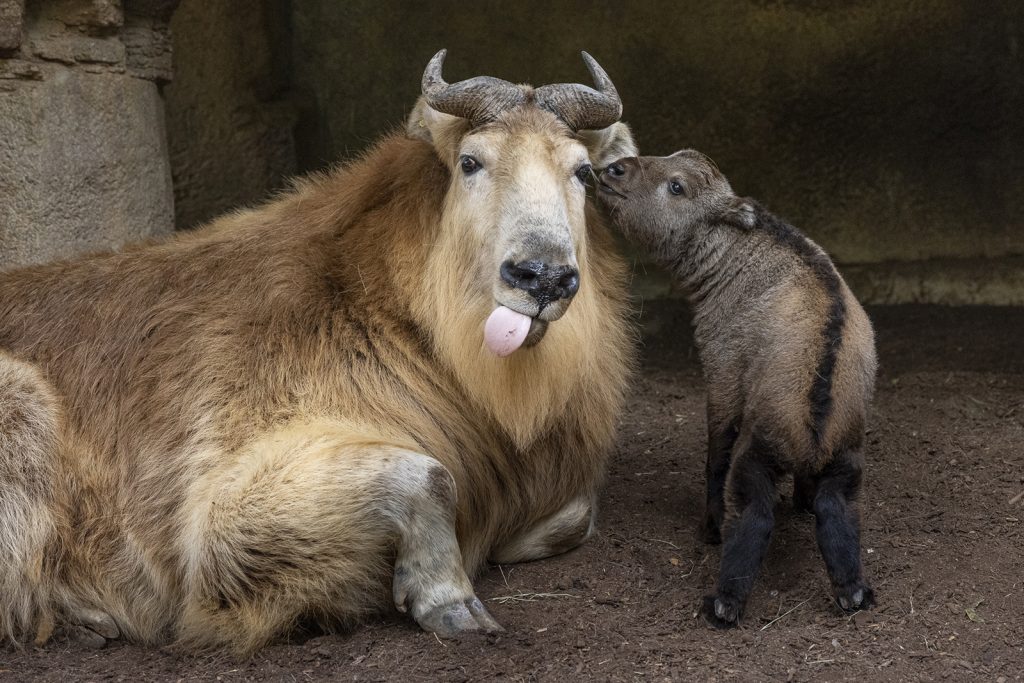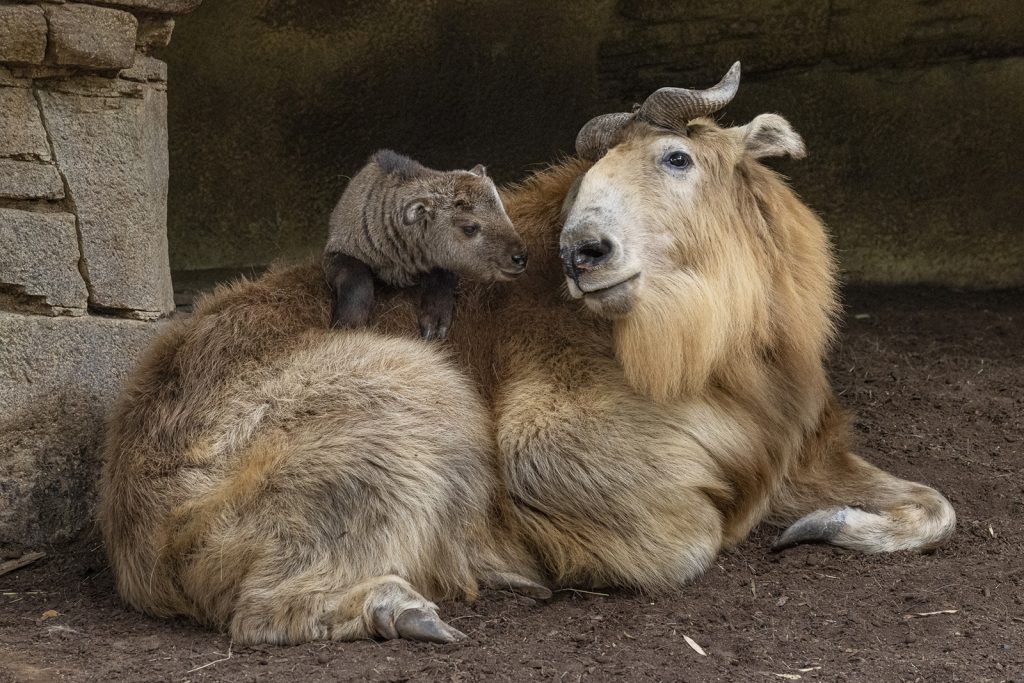
Female calf is the first of its kind born in the Western Hemisphere.
SAN DIEGO (May 14, 2021) – Wildlife care specialists at the San Diego Zoo welcomed the birth of a female golden takin last month, the first of this takin subspecies to be born in the Western Hemisphere. The female calf is named Mei Ling, meaning “beautiful antelope” in the Mandarin language. Golden takins are a horned mammal related to sheep and have adapted for life in the high elevation of their native Himalayan Mountain habitat.

The San Diego Zoo is the only place that golden takins (rhymes with “rockin’”) can be seen in the Western Hemisphere. These ruminants are very agile, navigating rugged landscapes with ease. They get their name from the golden hue of the thick, shaggy coat sported by adult takins.

Female takins generally give birth to a single kid in early spring. Within days, the young are capably moving on their own, a trait that helps them avoid predation. Young takins have a much darker coat than adults. Their deep brown color serves to keep them camouflaged from predators. Visitors to the Zoo’s Asian Passage, however, should have no trouble viewing the youngster as she bonds with her mother and becomes familiar with her habitat.
About San Diego Zoo Wildlife Alliance
San Diego Zoo Wildlife Alliance is a nonprofit international conservation leader, committed to inspiring a passion for nature and creating a world where all life thrives. The Alliance empowers people from around the globe to support their mission to conserve wildlife through innovation and partnerships. San Diego Zoo Wildlife Alliance supports cutting-edge conservation and brings the stories of their work back to the San Diego Zoo and San Diego Zoo Safari Park—giving millions of guests, in person and virtually, the opportunity to experience conservation in action. The work of San Diego Zoo Wildlife Alliance extends from San Diego to strategic and regional conservation “hubs” across the globe, where their strengths—via their “Conservation Toolbox,” including the renowned Wildlife Biodiversity Bank—are able to effectively align with hundreds of regional partners to improve outcomes for wildlife in more coordinated efforts. By leveraging these tools in wildlife care and conservation science, and through collaboration with hundreds of partners, San Diego Zoo Wildlife Alliance has reintroduced more than 44 endangered species to native habitats. Each year, San Diego Zoo Wildlife Alliance’s work reaches over 1 billion people in 150 countries via news media, social media, their websites, educational resources and the San Diego Zoo Kids channel, which is in children’s hospitals in 13 countries. Success is made possible by the support of members, donors and guests to the San Diego Zoo and San Diego Zoo Safari Park, who are Wildlife Allies committed to ensuring All Life Thrives.




